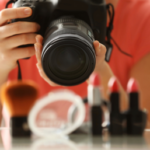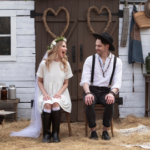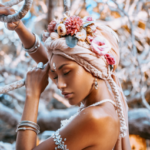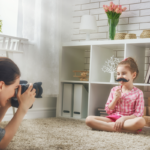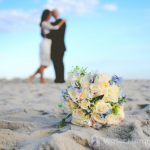Black and White Photography – A Popular Classic
Black and white photography is just enchanting, don’t you agree? The classic beauty of the photographs, the various lighting contrasts that come to life, and the emotions and feelings they evoke. Black and white photography has been the sole medium available in film photography for the longest time.
Although color photography has likewise been around since time immemorial, it wasn’t until the 60s when color really started to take over the globe, and it’s been that way since then. Most people may think that black and white photography is antiquated and has no use in the contemporary world. Nevertheless, black and white photography is still widely popular for a reason.
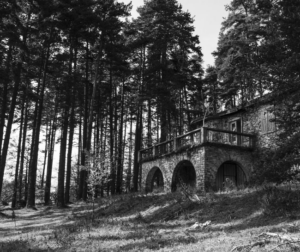
While capturing images in color is fantastic, black and white photos could bring a fresh perspective and a touch of class to your photographs that couldn’t be expressed through color use. Here are some tips that could make your black and white photography much better.
10 Find an Inspiration
Here’s an obvious tip that a lot of people overlook. If you’d want to excel in black and white photography, you need to look at old black and white photos for inspiration. Look at photos taken back when people were very limited with their coloring that they had to produce some striking shots to attract people. Check out some vintage photos and films to get your creative juices flowing. You can also look at modern photos in black and white and find inspiration from there.
Find an image that catches your attention. Why does it attract you? The texture? The contrast? Find those reasons and take notes.
9 Focus on the Contrast
Because black and white photography involves only limited shades like black, white, and grays, always highlight the contrast in the photographs you take. When capturing a scene, consider how it would look like in black and white. Bright backgrounds would look fascinating when contrasted with darker objects. Shooting a silhouette of an object or person in front of a bright background can create some striking contrast. The opportunities for creative experimentation are endless. Shoot a few photographs and find the contrasting elements. It could help you discover how you can take the perfect black and white photography shot.
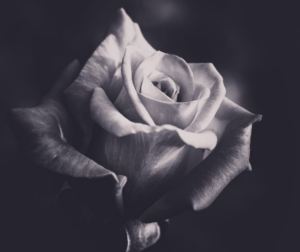
8 Always Shoot in RAW
Your go-to format should be RAW if you’re shooting black and white photography. With RAW, you can tweak the photographs to your liking and change it back to color if the photos don’t look good in black and white.
7 Play Around With Exposure
With photography, you wouldn’t want to use “normal” exposure for all of eternity; black and white photography is a good niche to play around with exposure. Sometimes over or underexposure can add dramatic and stunning effects to your photos. This is also true with black and white landscape photography. Always try out with different levels of exposure and take note of which one produces the best images.

6 Black can Highlight White
When shooting black and white photography, the dark shades could never be too dark in a lot of cases. If you snap some dark dark’s, be it on your professional camera, or tweaking them in post-production, you can make the whites pop out more. As a matter of fact, the whites and the grays will stick out even if they are weak.
Making your photos stick out is crucial. You would want your audience to see a subject that sticks out, and then scan at the rest of the image for other details they might have missed. Black and white photos are good at popping, but you would need to take extra precautions.
5 Look for Patterns
A good photo usually has some patterns to it. It’s something that makes the audience’s eyes follow the pattern and look for more. Those patterns could be blades of grass, cars going from right to left, rocks and pebbles on the ground, and any other repetitive texture, objects, or even design. For instance, shooting patterns in black and white street photography could make your images well-defined and make the subject attract attention. Patterns work wonderfully in black and white photography since there are no other colors to distract the viewers.
When shooting a photo, look for a pattern. If your eyes follow a pattern, this could be a good sign that you click the shutter button.
4 Experiment With Filters
With filters, you could limit the amount of light that enters your camera. This could be a brilliant asset to apply in black and white photography to make the photos a little darker or put even more contrast. For instance, I use a polarizer on the camera and capture a black and white photo, the bright shades will become a tad bit darker, and this can emphasize contrast even better.

Your camera’s partial fillers can help out as well. If a corner of the image is too bright, you can try darkening it a bit with a filter. See what kind of photos you can produce with the filter on and without it. This would let you see what photographs would look much better with a filter and which wouldn’t. A skilled photographer couldn’t succeed without a bit of experimentation, so just do it.
3 Enhance Your Photos with Software
When doing black and white photography, you’d also need to consider post-production. Lightroom and Photoshop can help make your black and white photos much better, although there are actually tools and programs designed particularly for black and white photography.
2 Black and White Photography is about Conveying Your Emotions
There are photographs that you might think would look stunning in black and white because they lack color from the beginning, like a close up of a zebra. Or a photograph of a black and white tiled floor. Even a dark, grey sky can fit the bill. You might agree that these kinds of photos can benefit from a black and white filter. However, in reality, impressive black and white photography is about highlighting a subject, relating a story, and expressing feelings and emotions, without the interference of colors. It isn’t really about snapping subjects that don’t have colors to start with.
1 Don’t Be Afraid to Use Flash
Flash is kind of a taboo when capturing natural photos, yes? Nevertheless, in black and white photography, using a flash may even be game-changing. Flash allows for more contrast by varying shades of greys when you turn those photos into black and white. Give it a try and see what you can produce.
To summarize what black and white photography is, it’s about looking for a fresh perspective and producing a visual that is better told without colors.
Conclusion
Black and white photography enthusiasts have produced visuals that extend over various photography niches, be it black and white landscape photography, black and white portrait photography, or even black and white pet photography. These niches have been fortified by photographers capturing from a different perspective and conveying their viewpoint without the use of colors.
Remember to protect your awesome black and white online photos with a watermark. Start watermarking today.







